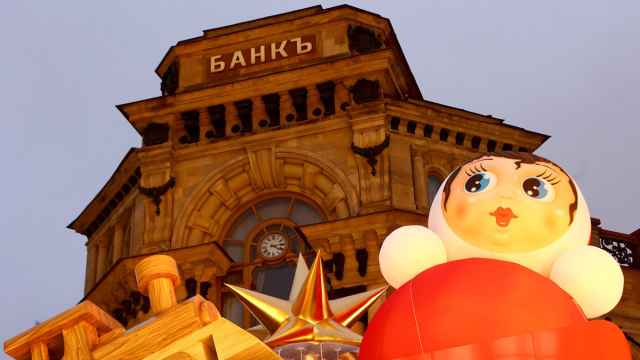The importance of the ruble in Russian banks’ foreign assets has hit its highest level since 2014, statistics from the Central Bank show.
A total of 13.4% of banks’ foreign assets were denominated in rubles at the end of the second quarter — the largest share since the third quarter of 2014 — according to figures released yesterday. Foreign assets include things like loans to companies and individuals based outside Russia.
Moreover, the share of banks’ foreign liabilities — the deposits and assets of non-Russians — held in rubles climbed 3.1 percentage points over the second quarter of the year to 24.7%. That is the highest level since the Central Bank started collecting such statistics in December 2001.
Foreign liabilities in currencies other than the dollar, euro or ruble also hit a record share at 7%.
The largest portion of ruble-denominated foreign assets held by Russian banks was just over one-fifth in December 2012. Analysts at VTB Capital said the structure of banks’ foreign assets “has been moving towards more diversity in recent years, with the share of the dollar declining to 55.3%, from 72.2% in the first quarter of 2015.”
In terms of the growing share of the ruble in banks’ liabilities, analysts pointed to the increased attractiveness of the currency among foreign investors. However, Yuri Belikov, managing director for validation at Expert RA told RBC that despite being “foreign” assets and liabilities, a large portion were likely linked to subsidiaries or holding companies of Russian firms registered in jurisdictions such as Cyprus, Ireland, Luxembourg and the United Kingdom.
A Message from The Moscow Times:
Dear readers,
We are facing unprecedented challenges. Russia's Prosecutor General's Office has designated The Moscow Times as an "undesirable" organization, criminalizing our work and putting our staff at risk of prosecution. This follows our earlier unjust labeling as a "foreign agent."
These actions are direct attempts to silence independent journalism in Russia. The authorities claim our work "discredits the decisions of the Russian leadership." We see things differently: we strive to provide accurate, unbiased reporting on Russia.
We, the journalists of The Moscow Times, refuse to be silenced. But to continue our work, we need your help.
Your support, no matter how small, makes a world of difference. If you can, please support us monthly starting from just $2. It's quick to set up, and every contribution makes a significant impact.
By supporting The Moscow Times, you're defending open, independent journalism in the face of repression. Thank you for standing with us.
Remind me later.






